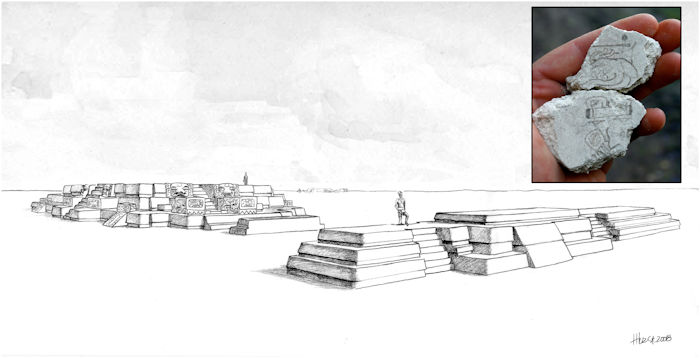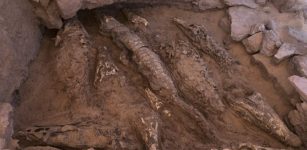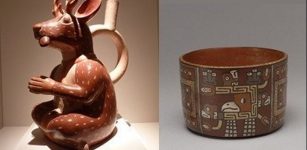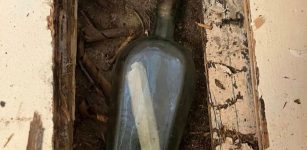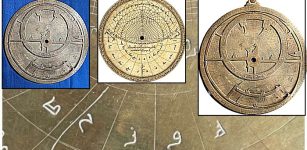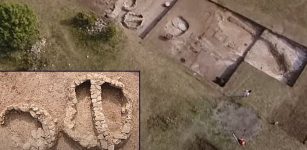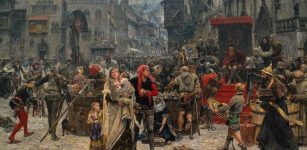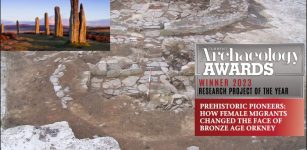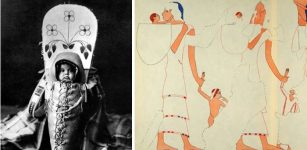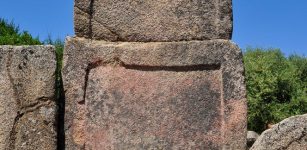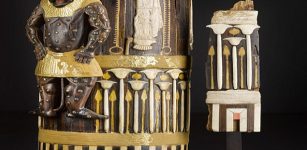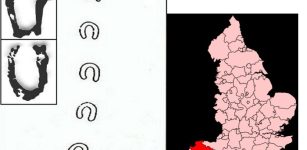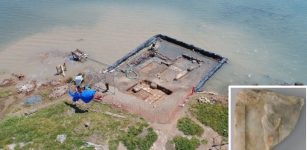Oldest Evidence Of Maya Calendar Discovered In Guatemala
Conny Waters - AncientPages.com - Evidence for the earliest known Maya calendar has been found in San Bartolo, Guatemala, by researchers at the University of Texas at Austin. While excavating murals at a site in San Bartolo, two fragments were found and pieced together to form the notation “7 Deer,” which dates back more than 2,000 years to 300 B.C., several centuries older than previously obtained evidence.
Reconstruction of San Bartolo Sub-V phase architectural complex and the 7 Deer day-sign mural fragments associated with this context. Credit: Photograph by Karl Taube, courtesy of the Proyecto Regional Arqueológico San Bartolo-Xultun.
The fragments are part of the Maya divination calendar, also used by other Mesoamerican cultures, including the Aztecs, and are still in use today. The calendar survived hundreds of years of conquests and the almost 40-year Guatemalan civil war, and it is a testament to the long history of Maya intellectualism.
“The Maya calendar is one of the most distinctive and well-known features of the culture and of traditional Mesoamerican peoples. It was in use for centuries before the arrival of Europeans, and some of it is still being used among indigenous Maya communities in Guatemala,” said David Stuart, a professor of art history who discovered the fragments. “But its origins have long been murky.
The discovery of the painted fragment at San Bartolo allows us to establish a good date of 300 B.C., which is far earlier than any date we had before.”
Credit: The Texas University at Austin
According to the study, which was published in the journal Science Advances, the 7 Deer day record is important for understanding the development of the 260-day divination calendar. The calendar is an important aspect of indigenous Maya identity in many contemporary communities, and this discovery establishes a good baseline for understanding the origins of Mesoamerican writing, science and religion.
Alongside the discovery of the calendar, researchers found 10 other text fragments that reveal an established writing tradition, multiple scribal hands, and murals combining texts with images from an early ritual complex. Stuart was also part of the team that discovered the site of San Bartolo in 2001.
“Before this, many assumed that the Maya simply borrowed an older system from other nearby cultures. Now we know they had it as early as anyone else, if not earlier,” Stuart said. “The Maya were key players in the development of Mesoamerica as a whole.”
See also: LIDAR Discovers Giant Ancient Mesoamerican Calendar – Structures Were Aligned To The Stars
Written by Jan Bartek - AncientPages.com Staff Writer

